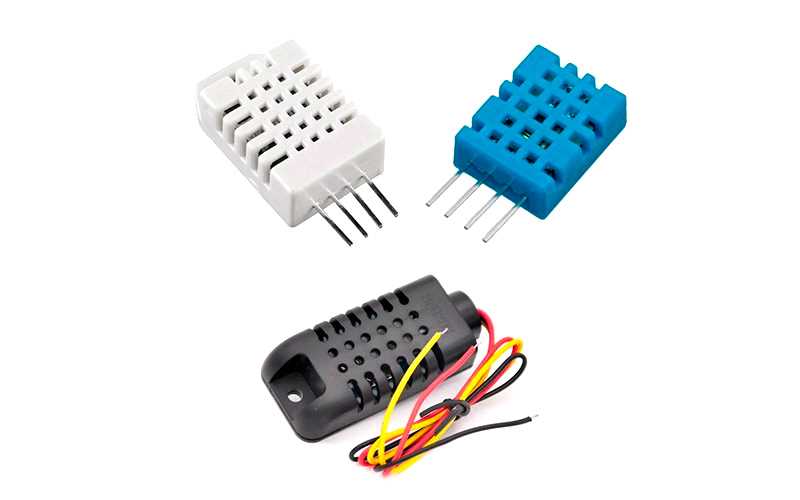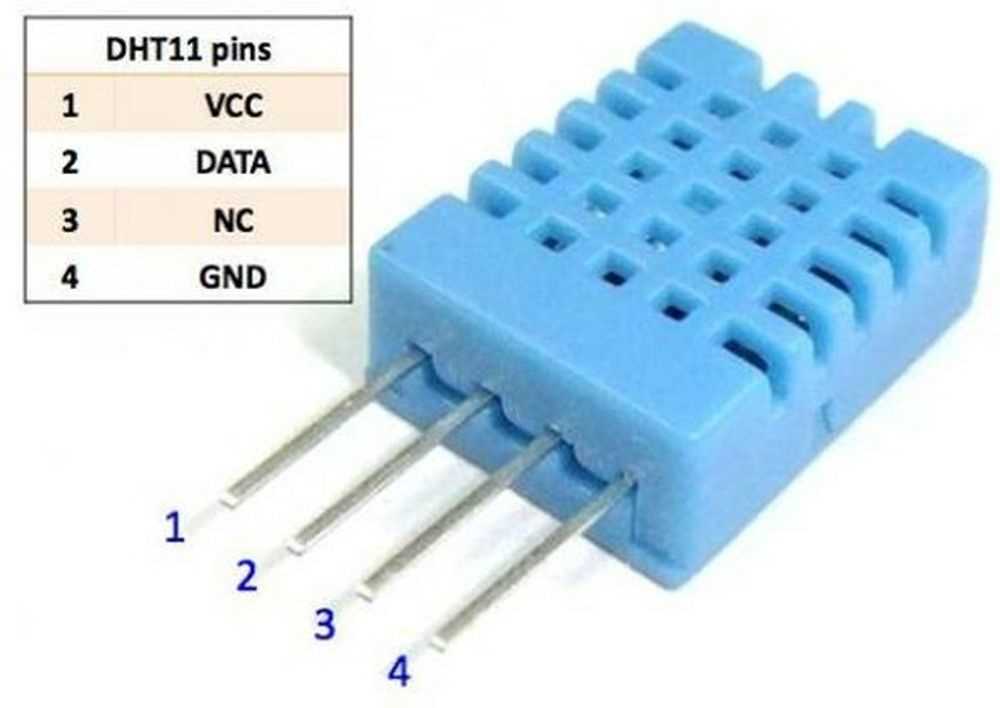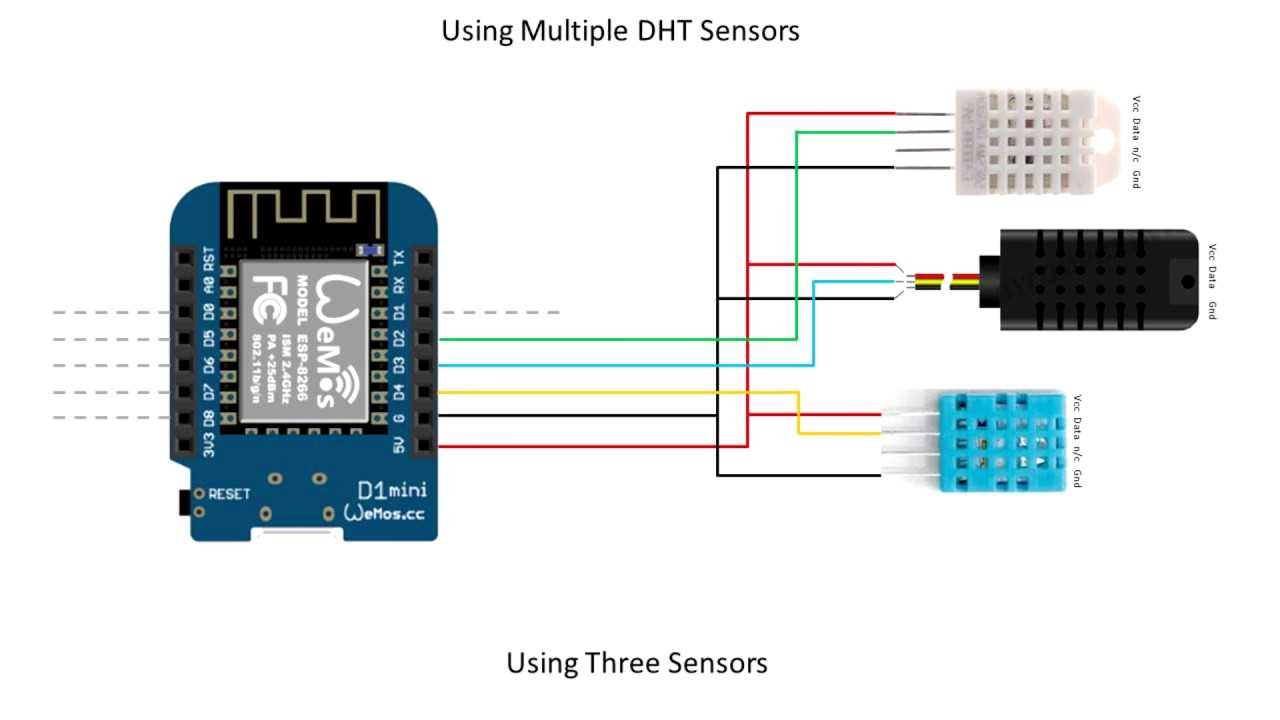
Have you ever wondered how temperature and humidity can be accurately measured and monitored? Look no further! In this comprehensive guide, we will delve into the fascinating world of the Dht21 sensor, exploring its features, functionalities, and applications.
As technology continues to advance, the need for precise climate control and environmental monitoring becomes increasingly crucial. The Dht21 sensor, also known as a temperature and humidity sensor, plays a pivotal role in gathering accurate data that enables us to make informed decisions in various industries, such as agriculture, automation, and weather forecasting.
Discover the inner workings of the Dht21 sensor: By leveraging cutting-edge technology, the Dht21 sensor utilizes ingenious techniques to measure temperature and humidity levels within its surroundings. With its high level of accuracy and reliability, it provides invaluable data that can be utilized to optimize performance, predict patterns, and maintain a controlled environment.
Uncover the multitude of applications: The Dht21 sensor’s versatility knows no bounds. From greenhouse management and indoor climate control to predicting weather patterns and preventing equipment malfunctions, this sensor empowers individuals and industries to better comprehend and respond to changes in temperature and humidity.
Understanding the Dht21 Sensor: Key Specifications and Features
When it comes to temperature and humidity monitoring, the Dht21 Sensor emerges as a vital tool. This section aims to provide an in-depth understanding of the sensor’s key specifications and features, enabling users to grasp its capabilities without relying solely on the datasheet.
The Dht21 Sensor, also known as the AM2301, ensures precise temperature and humidity measurements for a variety of applications. With its high sensitivity and accuracy, this sensor becomes indispensable for climate-controlled environments, greenhouses, weather stations, and even home automation systems.
- Precision: The Dht21 Sensor guarantees accurate temperature measurements within a +/- 0.5°C range and humidity measurements within a +/- 3% range. This level of precision ensures reliable readings for critical temperature and humidity control systems.
- Wide Operating Voltage Range: With a wide operating voltage range of 3.3V to 5V, the Dht21 Sensor provides flexibility and compatibility with a variety of microcontrollers and devices, making it an ideal choice for embedded systems.
- Low Power Consumption: The sensor’s low power consumption allows it to operate continuously without significantly impacting energy consumption. This feature is especially crucial for applications that require prolonged monitoring.
- Digital Output: The Dht21 Sensor utilizes a digital output, simplifying the interface with microcontrollers and eliminating the need for additional analog-to-digital converters. It provides temperature and humidity readings in a 16-bit format, ensuring efficient data processing and transmission.
- Long Transmission Distance: With reliable signal stability and a transmission distance of up to 20 meters, the Dht21 Sensor enables users to monitor temperature and humidity levels remotely, expanding its application possibilities.
- Easy Integration: The Dht21 Sensor features a compact design that allows for easy integration into various projects. Its small size and convenient mounting options make it suitable for applications with space constraints.
With its precision, wide operating voltage range, low power consumption, digital output, long transmission distance, and ease of integration, the Dht21 Sensor proves to be a versatile and reliable tool for temperature and humidity monitoring applications.
Exploring the Accuracy and Precision of the Dht21 Sensor

When it comes to accurately measuring temperature and humidity, the Dht21 sensor has gained significant popularity. In this section, we delve deeper into the accuracy and precision of this sensor, focusing on its ability to provide reliable and consistent readings.
The accuracy of a temperature and humidity sensor refers to how close its measurements are to the true values in the environment being measured. On the other hand, precision relates to the consistency and reproducibility of the sensor’s measurements. These two factors are interrelated but not the same.
Understanding the level of accuracy and precision of the Dht21 sensor is crucial for various applications, ranging from weather stations to industrial automation. Knowing the limitations and strengths of this sensor can help users make informed decisions and ensure reliable data collection.
One way to evaluate the accuracy and precision of the Dht21 sensor is by comparing its readings with a reference device or a calibrated instrument. Through carefully controlled experiments, data can be collected and analyzed to determine any discrepancies or biases in the sensor’s measurements.
It is important to note that accuracy and precision may vary depending on factors such as operating conditions, calibration, and manufacturing tolerances. In this section, we will explore these influencing factors and their impact on the performance of the Dht21 sensor.
Furthermore, we will discuss potential sources of error that users should be aware of when relying on Dht21 sensor data. This includes factors like sensor drift, environmental factors, and improper handling or installation.
By gaining a comprehensive understanding of the accuracy and precision of the Dht21 sensor, users can confidently utilize its measurements for their specific applications. Furthermore, we will explore potential techniques to improve the overall accuracy and precision of this sensor, ensuring optimal performance and reliable data collection.
Unveiling the Temperature and Humidity Measurement Capabilities of the Dht21 Sensor
In this section, we will explore the advanced temperature and humidity measurement features provided by the innovative Dht21 sensor. This sensor opens up exciting possibilities for accurately and reliably monitoring environmental conditions in various applications.
Accurate Temperature Measurements

The Dht21 sensor uses a sophisticated temperature measurement technology to provide highly accurate readings. By utilizing precise thermistors and advanced calibration techniques, it can detect even subtle temperature changes with great precision. This makes it an ideal choice for applications where precise temperature control is crucial.
Precise Humidity Measurements
In addition to temperature measurements, the Dht21 sensor also offers exceptional humidity measurement capabilities. It incorporates a high-quality capacitive humidity sensor that accurately detects and measures moisture levels in the surrounding environment. With its ability to provide real-time humidity data, it is invaluable for applications that require accurate humidity monitoring.
The Dht21 sensor’s humidity measurement accuracy is further enhanced by its integrated temperature compensation feature. This compensates for any temperature variations that may affect humidity readings, ensuring reliable and precise measurements regardless of environmental conditions.
- Highly accurate temperature measurements
- Precise humidity detection and measurement
- Real-time humidity monitoring
- Integrated temperature compensation for reliable measurements
- Suitable for applications requiring precise environmental monitoring
Overall, the Dht21 sensor offers impressive temperature and humidity measurement capabilities, making it a versatile and dependable choice for a wide range of applications. Its accuracy, reliability, and real-time monitoring features make it an invaluable tool for various industries, including agriculture, HVAC systems, and scientific research.
An In-depth Look into the Power Consumption and Communication Protocols of the Dht21 Sensor

In this section, we delve into the intricacies of the Dht21 sensor’s power consumption and explore its different communication protocols. Understanding these aspects is crucial for optimizing the performance and efficiency of the sensor in various applications.
Understanding Power Consumption

Power consumption is a critical factor to consider when utilizing the Dht21 sensor. By analyzing its power requirements, we can assess the sensor’s impact on battery life and overall power management in a system. This section explores the factors that influence power consumption and offers insights on effectively managing and reducing power usage.
Exploring Communication Protocols
The Dht21 sensor utilizes various communication protocols to transmit data to the receiving device. This section delves into the specifics of these protocols, such as timing, data encoding, and error detection. Understanding these protocols allows us to establish reliable and efficient communication between the Dht21 sensor and other devices, ensuring accurate data transmission.
By delving into the power consumption and communication protocols of the Dht21 sensor, we gain a comprehensive understanding of its performance and behavior in different scenarios. This knowledge enables us to optimize its usage and leverage its capabilities effectively in our projects and applications.